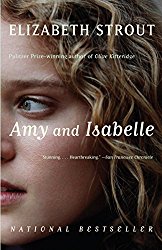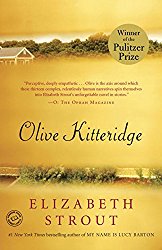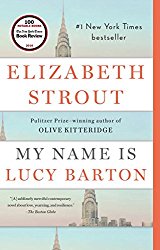Elizabeth Strout’s work tells us how to establish a character’s age using something other than numbers.
When I was in writing school years ago, I had an experience I frequently recount, wherein Elizabeth Strout, the Pulitzer Prize–winning author of Olive Kitteridge, taught me more in a 10-minute workshop introduction than I had learned in all the many writing seminars and workshops I had had up to that day. In that 10 minutes, Strout imparted on us, among other things, the importance of positioning and authority, and the notion that we writers need to take our readers by the hand and gently but confidently lead them through our stories. I recalled that day again recently when Strout gave me a bit of advice on a piece of writing I’d long ago considered completed and buttoned up. After reading the Prologue to my unpublished first novel, wherein my protagonist and his wife are introduced to the reader, Strout told me I needed to “…let us know right away, or pretty soon, how old this man is, how old is wife is…without using numbers.” This would, she said, “be helpful in positioning the reader.”
When I was in writing school years ago, I had an experience I frequently recount, wherein Elizabeth Strout, the Pulitzer Prize–winning author of Olive Kitteridge, taught me more in a 10-minute workshop introduction than I had learned in all the many writing seminars and workshops I had had up to that day. In that 10 minutes, Strout imparted on us, among other things, the importance of positioning and authority, and the notion that we writers need to take our readers by the hand and gently but confidently lead them through our stories. I recalled that day again recently when Strout gave me a bit of advice on a piece of writing I’d long ago considered completed and buttoned up. After reading the Prologue to my unpublished first novel, wherein my protagonist and his wife are introduced to the reader, Strout told me I needed to “…let us know right away, or pretty soon, how old this man is, how old is wife is…without using numbers.” This would, she said, “be helpful in positioning the reader.”
No one who has studied with Strout will be surprised by
that advice, and in fact my only surprise was that I needed it at all, because
I really should have known better. But no matter, I was hugely grateful for the
guidance, and so I set about filling in the gap. I just needed to figure out
how, and that search led me to some discoveries I thought would interest my
fellow writers. It was my wife Caroline who wisely suggested that I look
at Strout’s own books to see how she addressed the problem, and so here, book
by book, are the solutions I discovered:
Amy and Isabel (1998)
As the title implies, this is the story of two women, a
mother and a daughter. Strout is therefore able to use this relationship to tell
how old both characters are in one swoop. After a lengthy description of
Isabelle—which, of course, contains its own clues about her age—we get the
simple phrase, “…her daughter, Amy, a girl of sixteen…” Obviously, Strout
chooses to use a number here, but this is unobtrusive because of the character’s
formative age and the fact that we are so well positioned in the lives of both
characters with this one piece of solid information that we are easily able to
retain that positioning throughout the story.
Abide with Me (2006)
The parent-child relationship is also key to establishing
the age of the Reverend Tyler Caskey, the protagonist of Abide with Me. Strout accomplishes this gradually, just as she does
with Isabelle, but the first clues come in the very first sentence: “Oh, it
would be years ago now, but at one time a minister lived with his small
daughter in a town up north near the Sabbanock River,…” Here we see that the
age of the characters is just one element of positioning the reader, and that timing
(“years ago now”) and setting (“a town up north”) are also important. We also
see that working them in together is where the artistry comes in, that doing so
with the right amount of grace and subtlety accomplishes a purely practical
objective in a way that, again, takes the reader by the hand.
Olive Kitteridge (2008)
In this, Strout’s Pulitzer Prize winner, a book that has
subsequently been made into an HBO mini-series produced by and starring Frances
McDourmand, the reader is
positioned at the beginning, but then must be repositioned many times as the
book goes on. This is because Olive
Kitteridge isn’t a novel in the pure sense, but rather a collection of
stories and vignettes, all taking place at different points in the lives of the
characters, Olive and Henry Kitteridge. In many cases, in fact, Olive and Henry
are off to the side, observers.
 Because Olive and Henry are old at the outset, Strout is
able to use their stage of life to establish age, which she does, again,
starting with the very first sentence. “For many years,” she writes, “Henry
Kitteridge was a pharmacist in the next town over,…” Again weaving in setting
and timeframe, she continues in the next sentence, “Retired now, he still wakes
early and remembers how mornings used to be his favorite,…” Because Olive is
married to Henry, the reader will naturally assume that she is of a similar
age, and only needs to be informed otherwise if their ages are far apart, which
they aren’t.
Because Olive and Henry are old at the outset, Strout is
able to use their stage of life to establish age, which she does, again,
starting with the very first sentence. “For many years,” she writes, “Henry
Kitteridge was a pharmacist in the next town over,…” Again weaving in setting
and timeframe, she continues in the next sentence, “Retired now, he still wakes
early and remembers how mornings used to be his favorite,…” Because Olive is
married to Henry, the reader will naturally assume that she is of a similar
age, and only needs to be informed otherwise if their ages are far apart, which
they aren’t.Having anchored the reader in one point in time, Strout moves on to other timeframes and new protagonists, always being careful to reposition the reader as needed.
Patty Howe, a protagonist in the second chapter, “Incoming
Tide,” is first positioned by her occupation, a waitress in a coffee shop, and
is then set as a young wife who has recently miscarried by her reaction to
newly baked muffins: “The fact that their newly baked scent did not touch off a
queasiness in her, as they had two times in the past year, made her sad: a soft
dismalness settled over her.”
Angie O’Meara, the protagonist in the third chapter, “The
Piano Player,” is set as a lounge singer of middle age at the end of the first
paragraph, “…the townspeople of Crosby, Maine, had for many years now taken
into their lives the cocktail music and presence of Angie O’Meara.”
And so on. The unique structure of Olive Kitteridge makes it a veritable object lesson in positioning
the reader, and in establishing age without numbers.
The Burgess Boys
(2013)
The protagonists of this story, the brothers Jim and Bob
Burgess and their sister Susan, are introduced in an opening scene wherein an
old woman gossips with her daughter about current and former residents of their
town, Shirley Falls. The tenor of the scene suggests a distant past and
characters—despite their being referred to as “the Burgess kids”—of a
reasonably mature age. But it is the reference to their life experience, which,
of course, foreshadows the dramatic events of the story to come, that sets them
firmly in middle age: “The Burgess kids had a hold on her, I think,” says the
daughter of the old woman, “as a result of the fact that all three had suffered
publicly.”
My Name is Lucy Barton (2016)
Positioning in this and all of Strout’s books is
particularly important because her stories tend to wander widely to take in broad
sweeps of time. This story is anchored in a 5-day period when the protagonist,
Lucy Barton, was bedridden in the hospital and attended by her mother. As Lucy
recalls this time, she remembers observing the world through her hospital room
window: “I would stand and look out the window at the sidewalk below and watch
the young women—my age—in their spring clothes,…” By mirroring Lucy against
young professional women on a New York sidewalk, Strout firmly establishes her
as a woman in her late twenties, and the reader is set in a firm position from
which to experience the rest of the story, including Strout’s wanderings into
distant places and timeframes.
And so, without revealing which approach I decided on—we’ll all have to wait for some visionary editor to finally buy my book for you to find that out—I can confidently say that a critically important and often unseen element in the best fiction is the very practical step of positioning the reader firmly in the story. So, whether you use relationships, stage of life, occupation, life experience, mirroring, or, as is typical and most effective, some combination of these devices, it is absolutely key that you establish the ages of your characters at the outset. Furthermore, the best writers know that simply using numbers to tell the reader, and then expecting them to remember that for the rest of the story, just isn’t enough. The timeframe, the setting, the antagonists and minor characters, and all the other elements of the story need to work together to reinforce who the characters are and, most importantly, what matters to them. Because readers won’t care about your characters until they know what the characters want, and we all want different things at different stages of our lives.





